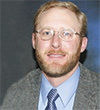Without question, the use of expected progeny differences (EPDs) has enabled this degree of genetic change. The question at hand, however, is “have we selected towards that which is optimal?”
Interestingly, four different benchmark data sets for commercial cow-calf producers from the states of Minnesota, North Dakota, Kansas, as well as Texas, New Mexico and Oklahoma have shown little to no change in average weaning weights or calf weaning rates in terms of the percentage of calves weaned per cow exposed over a similar time period (Figure 1).

This has to prompt the question why? How can it be that there has been such significant genetic change in several breeds that should increase weaning weights, but commercial cow-calf data would indicate there has been relatively no change?
Matching resources
In 2014, Dr. David Lalman from Oklahoma State University made a presentation at the Applied Reproductive Strategies in Beef Cattle meeting titled “Matching Cows to Forage Resources in a World of Mixed Messages.”
In that presentation, Lalman made the case that the genetic potential of many cattle today are beyond the nutrient levels provided by forage resources and hinder that genetic potential from being expressed.
He also presented data that would indicate that the cost of maintaining larger cows with higher milk potential exceeds the value produced by small increases in calf weaning weights.
In 1988, Dr. Rick Bourdon wrote a paper titled “Bovine Nirvana – From the Perspective of a Modeler and Purebred Breeder” where he presented the case that genetic selection should be toward the optimum for what a set of resources or environment could support.
The following is a quote from Bourdon that captures the essence of the focus of selecting for optimum. “To breed for optimum means to have a target insight beyond which you don’t want to go. If your goal is to maintain an optimum level for any trait, the evidence of your accomplishment is not visible change, but lack of it.”
Is it possible in the push to genetically produce cattle that will be more productive, we have, in many cases, overshot what is optimum? Is the genetic potential of cows for growth and milk production beyond what many environments can biologically support without the addition of significant harvested feed and supplements?
Where is optimum? What are the parameters for those genetics given a set of resources?
Perhaps it is a drive in man’s nature to believe there is always the possibility to get more that continues the push in the pursuit of genetic selection for increased production. In biological systems, there tends to be a place of optimum given a set of resources.
In nature, native ruminants such as deer, antelope, elk and buffalo are limited reproductively by what the environment provides. Natural selection favors those animals whose genetics match what available resources can provide.
From a cow-calf perspective, the diversity of resources in the U.S. in terms of feed and climatic environments cows are asked to produce under are extremely varied. Take, for example, the diversity and variation comparing cows in a swampy Florida setting to cows in a northwest Wyoming high desert region.
The optimum genetics for cow-calf production given one of these sets of resources is likely significantly different from those that would be optimum under the other. Yet cows in each of these environments are asked to produce a calf that fits the desires and goals of the cow-calf, cattle feeding, packing and retail industry.
No small challenge from a cow-calf producer perspective where one is looking to meet industry desires and demands on the one hand, while seeking to produce replacement heifers that fit the resources and environment on the other.
Hitting the mark
Cow-calf producers have EPDs and index tools to make genetic selection decisions related to traits that impact levels of productivity and longevity. Cow-calf producers selecting sires from which to develop replacement heifers would be well served to evaluate and identify where their cow herd is compared to what they believe optimum would be.
Based on that evaluation, sires would be selected to produce daughters whose maintenance energy, longevity, level of milk production and mature weight would move them toward identified optimums given available resources.
Identifying and selecting optimum genetics for milk production and mature weight is a genetics selection approach for many cow-calf producers that is different than what recently has occurred. In many cases, this will mean selecting sires at a bull sale that are at or below breed average in desired traits.
Selecting a bull that is “below average” is a paradigm shift for many cow-calf producers. Identifying a window of optimum given a set of resources and then selecting cattle that hit the optimum target is the goal under this method of cattle breeding.
Success in selecting for optimum means that for many producers, they will be selecting sires whose EPDs for milk production and mature weight will decrease the average in their herd. Simultaneously, they should be using EPDs to select for traits that will maintain or improve fertility and longevity.
Many cow-calf producers may find that sourcing maternal genetics outside of their herd, that fit the optimum of their environment, to be a simpler and more profitable approach than internally selecting for maternal traits and retaining replacement heifers. These genetically adapted cows could then be bred to terminal bulls to produce calves that fit industry desires.
This method of genetic selection greatly simplifies management and provides opportunities that internal replacement heifer retention limits. Genetic selection and breeding programs should focus on increased profit, and in many cases this may mean selection for decreased mature weight and milk production. ![]()
ILLUSTRATION: Illustration by Corey Lewis.

-
Aaron Berger
- South Panhandle Extension Unit
- University of Nebraska
- Email Aaron Berger






